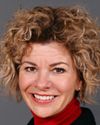Thank you very much, Madam Chair, for inviting me back.
I'm going to speak to my experience of adopting as a non-aboriginal or mainstream parent of two aboriginal children.
First of all, I want to say that I'm a proud mother of two young Ojibway women. I adopted my first daughter, Miranda, when she was eight years old. At the time she was in non-aboriginal foster care in Kenora. I saw her picture on Canada's Waiting Children, which is the national photo listing service that the Adoption Council of Canada runs. She was the first person adopted as a result of that list, although I didn't know it at the time.
I'm adopted myself, so I always envisioned adoption as a way to build a family. As a reporter, I had covered many aboriginal issues and had been in many first nations communities, where I had very positive experiences. I was committed to adopting an aboriginal child and to fostering that child's culture and heritage. My children know who they are and I'm proud of that.
My home was already filled with aboriginal art and books, and I made contacts with the aboriginal communities wherever possible where I was living. Here in Ottawa I've had great support from the Wabano Centre for Aboriginal Health. When I adopted I was told by Miranda's social worker in Kenora that her band had been informed that she was a crown ward eligible for adoption. Her community had an opportunity to make a plan for her and they were not able to do so. Today, as a non-aboriginal parent, I would probably not be permitted to adopt Miranda.
The political climate concerning the adoption of aboriginal children by non-aboriginal parents is a difficult one. You heard a little bit about that today. I want to tell you that sitting here it made me pretty uncomfortable. There's a bit of a subtext going on here, which is that as a non-aboriginal parent I'm an inferior parent to my aboriginal children. I have to say that makes me uncomfortable because I don't think it's true. It's not ideal, but I don't think we should be establishing families on the basis of race as a barrier, any more than we should be establishing on a racial basis.
I should also note that I took Miranda back to her home community when she was 16, and she has since reconnected with her birth family. I hope that if you have a youth panel, she'll be able to speak to you about that. I think she needed to make that reconnection, although it was not an easy experience for anybody.
Five years after I adopted Miranda, I adopted my second daughter, who was a member of the Aamjiwnaang First Nation, also known as the Chippewas of Sarnia. The process for that adoption was quite different, and I met with representatives from her band at that time. Although they didn't want to commit themselves in writing to approving the adoption in a non-aboriginal family, they did not oppose the adoption. In practice, they signed off on it without putting that in writing.
The Adoption Council of Canada's position is that, first of all, the federal government should, as Cindy Blackstock said, fund native child welfare agencies at least as well as provincial child welfare agencies so that they can support families and hopefully prevent aboriginal children--as we would like to prevent any child--from coming into care. However, when aboriginal children come into care we need to do a better job of recruiting aboriginal families. We also believe finding loving, qualified, permanent families should be the priority, regardless of the race of those families. Non-aboriginal families should be encouraged and helped to make cultural plans to nurture their children's culture. There are many wonderful adoptive parents who are aboriginal and many wonderful adoptive parents who are not aboriginal, and they parent aboriginal children.
A few years ago, the wonderful Joan Glode, from Mi'kmaq Children and Family Services in Nova Scotia, told a group of adoptive parents, including me, that when she was working with Nova Scotia to write legislation pertaining to adoption, they defined an aboriginal family as a family having one or more members who are aboriginal. That brought tears to my eyes, and that's how I now describe my family. We became an aboriginal family when I adopted my children. In some parts of British Columbia and Alberta, first nations recognize this inclusive principle. They have in fact adopted non-aboriginal parents, welcoming them with a blanket ceremony. I think Yellowhead is one of those agencies that you heard about today. This is the approach I would like to see individuals, communities, and federal and provincial governments and their agencies adopt across the country. Instead of excluding, let's include.
Thank you.






